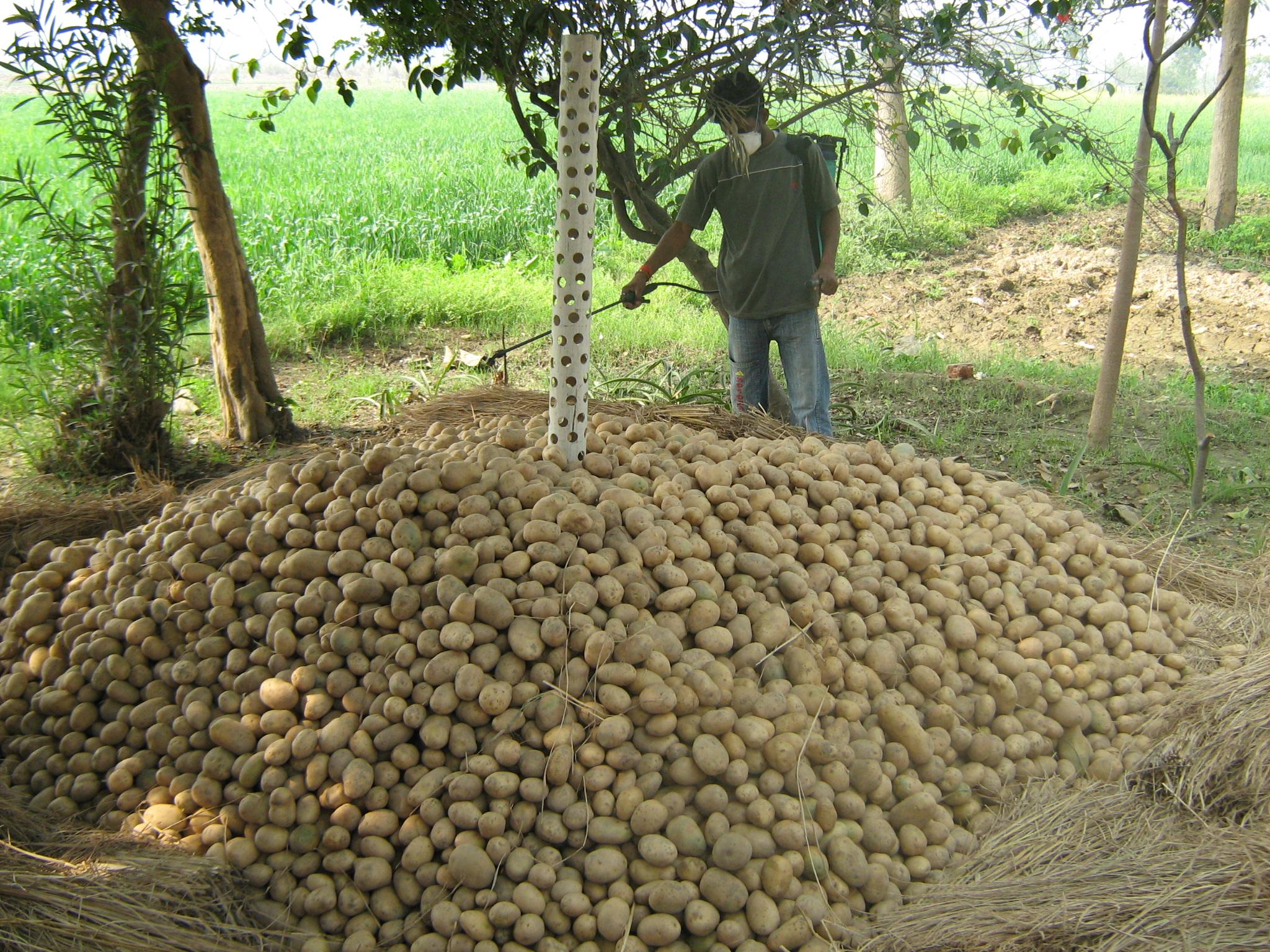

Potato production in India has shown a steady increase in the last 50 years. Increase in production often resulting in gluts at harvest, has led to several post-harvest problems and the major one is that of storage. A total of 90 per cent of potato crop of the country is harvested during January-February from the Indo-Gangetic plains, comprising the states of Punjab, Haryana, UP, Bihar, West Bengal, MP and Gujarat where the harvest is followed by rising temperatures of hot and dry summer and further by warm and humid rainy season. Since potato tubers contain about 80% water, under these conditions potato, a semi-perishable commodity can not be stored without refrigeration for more than 3-4 months due to very high losses as a result of shrinkage, sprouting and attack by microorganisms.
Therefore, potatoes are mostly stored in refrigerated cold stores maintained at 2-4oC and 90-95% relative humidity (RH). Low temperature storage has advantages of natural control of sprout growth, low evaporative loss, minimum risk of diseases and pests and reduction of senescent sweetening. These conditions are ideal for storage of seed but it causes cold-induced sweetening leading to excessive accumulation of sugars in most of the potato cultivars making potatoes unfit for processing due to browning in chips and these are less preferred for consumption because of sweet taste. Hence, potatoes meant for processing are either stored under non-refrigerated conditions for short term or stored at 10-12oC with the use of CIPC (isopropyl N-(3-chlorophenyl) carbamate), where the accumulation of reducing sugars is minimum and chips produced are light in colour.